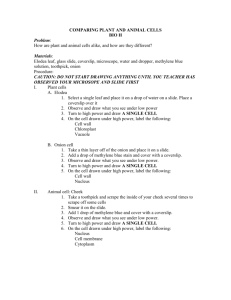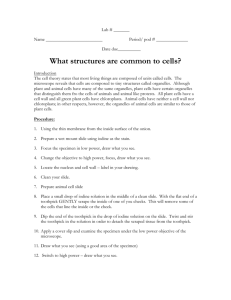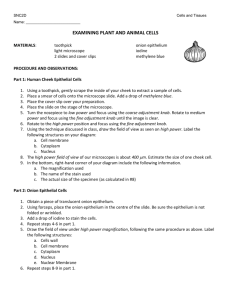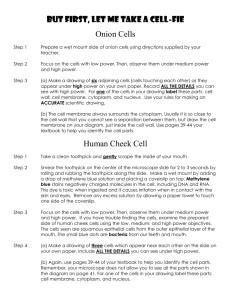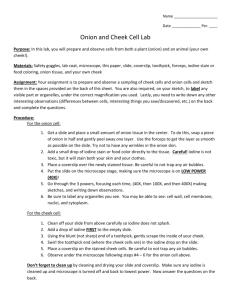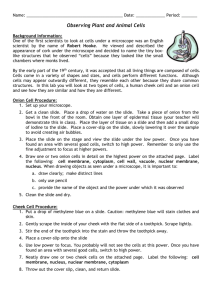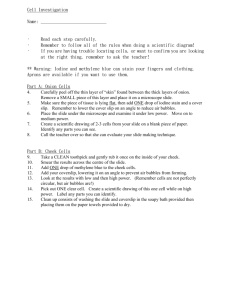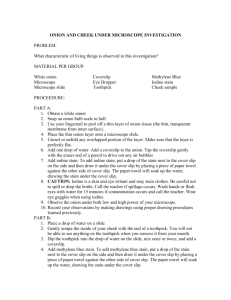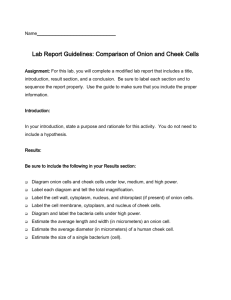Animal / Plant Cell Lab
advertisement
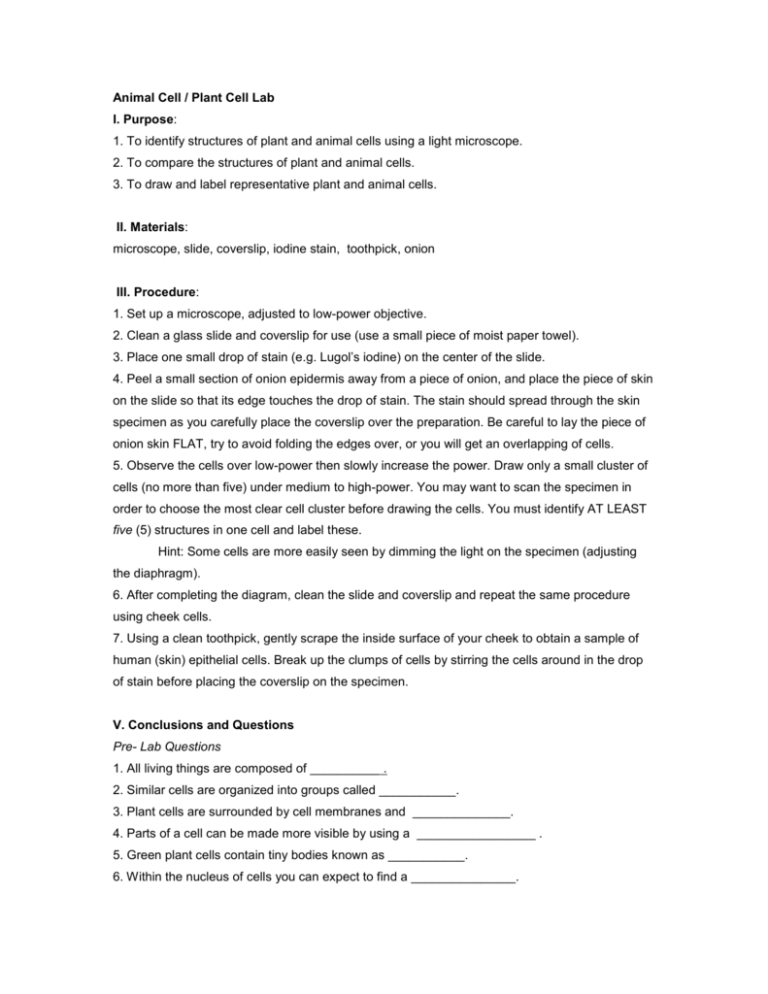
Animal Cell / Plant Cell Lab I. Purpose: 1. To identify structures of plant and animal cells using a light microscope. 2. To compare the structures of plant and animal cells. 3. To draw and label representative plant and animal cells. II. Materials: microscope, slide, coverslip, iodine stain, toothpick, onion III. Procedure: 1. Set up a microscope, adjusted to low-power objective. 2. Clean a glass slide and coverslip for use (use a small piece of moist paper towel). 3. Place one small drop of stain (e.g. Lugol’s iodine) on the center of the slide. 4. Peel a small section of onion epidermis away from a piece of onion, and place the piece of skin on the slide so that its edge touches the drop of stain. The stain should spread through the skin specimen as you carefully place the coverslip over the preparation. Be careful to lay the piece of onion skin FLAT, try to avoid folding the edges over, or you will get an overlapping of cells. 5. Observe the cells over low-power then slowly increase the power. Draw only a small cluster of cells (no more than five) under medium to high-power. You may want to scan the specimen in order to choose the most clear cell cluster before drawing the cells. You must identify AT LEAST five (5) structures in one cell and label these. Hint: Some cells are more easily seen by dimming the light on the specimen (adjusting the diaphragm). 6. After completing the diagram, clean the slide and coverslip and repeat the same procedure using cheek cells. 7. Using a clean toothpick, gently scrape the inside surface of your cheek to obtain a sample of human (skin) epithelial cells. Break up the clumps of cells by stirring the cells around in the drop of stain before placing the coverslip on the specimen. V. Conclusions and Questions Pre- Lab Questions 1. All living things are composed of __________ . 2. Similar cells are organized into groups called ___________. 3. Plant cells are surrounded by cell membranes and ______________. 4. Parts of a cell can be made more visible by using a _________________ . 5. Green plant cells contain tiny bodies known as ___________. 6. Within the nucleus of cells you can expect to find a _______________. Post- Lab Questions 1. Describe the general appearance of the onion epidermis cells. 2. How can you tell that these onion cells have thickness (3-D, depth)? 3. Which parts of the onion cells became more visible after staining? 4. How did the cheek cells and onion cells differ in shape and in size? 5. What are the functions of the cell wall? 6. Since the plant cell has a cell wall, what is the function of the cell membrane? 7. Which parts of the onion cell did you also find in the cheek cell? How did they differ? 8. Explain why you usually found the onion cell nucleus at the edge rather than in the center of the cell.
